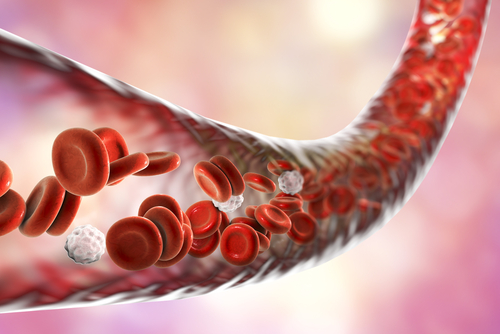Study Identifies Novel Molecular Players as Potential Therapeutic Target in Bradykinin-mediated Swelling Attacks

Bradykinin, a key molecular player involved in swelling attacks in hereditary angioedema patients, does so by signaling through the cyclooxygenase (COX) proteins, which may be targeted with common anti-inflammatory medications such as ibuprofen and diclofenac, a study has found.
By uncovering additional molecules participating in angioedema attacks, such studies could pave the way for novel angioedema treatments.
The study, “Cyclooxygenase activity in bradykinin-induced dermal extravasation. A study in mice and humans,” was published in Biomedicine & Pharmacotherapy.
Bradykinin is a signaling molecule known to be involved in non-allergic angioedema. When this signaling molecule binds its receptors, it sets off a cascade of many different molecular events, ultimately dilating blood vessels and causing fluid to build up between layers of skin.
Exactly which molecular processes are activated by bradykinin to cause angioedema, however, hasn’t been well-understood.
In the new study, researchers focused on two proteins — COX and nitrix oxide synthase (NOS) — known to be activated by the bradykinin receptor type 2, a receptor of bradykinin involved in angioedema. Both COX and NOS are responsible for making other signaling molecules: COX for prostaglandins and NOS for nitric oxide.
The researchers injected mice with bradykinin and measured the extent of dermal extravasation (swelling of the skin).
No difference was found in the amount of extravasation between normal mice and mice that had been engineered to lack NOS. Similarly, inhibition of NOS did not affect swelling. This suggested “that activation of NO signalling is rather unimportant in this setting,” the researchers wrote.
In contrast, inhibition of COX significantly reduced the extend of extravasation after bradykinin injection.
COX comes in two forms: COX1 and COX2. Treatment with either SC560 (a small molecule inhibitor of COX1) or celecoxib (an inhibitor of COX2) reduced dermal extravasation significantly. Treatment with either ibuprofen or diclofenac, both of which unspecifically inhibit both forms of COX, reduced swelling to an even greater extend than the more specific inhibitors.
“These data suggest that both COX1 as well as COX2 may be involved in the development of bradykinin-induced extravasation in small dermal blood vessels of mice,” the researchers wrote.
These results were then validated in 38 healthy human volunteers, in the ABRASE study. Swelling was induced by an injection of bradykinin and was measured over the course of several hours until it resolved. Then, participants took a COX inhibitor (ibuprofen) before receiving another bradykinin injection, and swelling was monitored again.
The average time to resolution of swelling was significantly shorter with ibuprofen treatment than without (83 vs. 100 minutes). Additionally, the average maximum size of the induced wheals was significantly smaller following ibuprofen treatment (386 vs. 469 square millimeters). Of note, these two factors (time to resolution and wheal size) were not significantly associated with each other.
“These data suggest that the development of non-allergic angioedema depends on bradykinin-induced activation of COX,” the researchers wrote.
They noted that COX inhibition didn’t completely stop swelling in any of the experiments; as such, other molecular mechanisms are likely also involved. Future studies may help clarify what those mechanisms are.
Nonetheless, this study establishes a role for COX — and, by extension, prostaglandins — in bradykinin-induced angioedema. Further studies could identify the specific prostaglandins involved and their molecular partners, which “may open new treatment options for non-allergic angioedema,” the researchers wrote.
Furthermore, the researchers noted that a class of drugs called glucocorticoids block the release of arachidonic acid, a molecule COX uses to make prostaglandins. As such, this finding suggests that glucocorticoids might have efficacy in treating non-allergic angioedema, but additional research will be needed to test this hypothesis.






